Spread Peace in Small Ways

When I was younger, I thought I had to do or be involved with something really big to make a difference and spread peace. Now I believe that I have the ability to create peace on earth every day with every person I come in contact with. Sometimes just a smile can bring peace to someone. I believe the little things matter.
Staying out of the gossip at work, not reacting to the mean driver behind me on the way home, listening to someone who needs to talk, doing what I can to help those around me. I also think that teaching my son by example to be tolerant of others' beliefs and practices is very important. I may not be able to bring peace to the whole world, but I can work on bringing peace to my little corner of it.
– siren_of_titan
Help Seniors and Their Caregivers
 Today I was able to help educate a group of caregivers for the elderly and thank them for their service to seniors. I think that they may feel unappreciated because they are overworked and underpaid. I thanked them for their passion and hoped that getting this positive message would help them with their daily responsibilities.
Today I was able to help educate a group of caregivers for the elderly and thank them for their service to seniors. I think that they may feel unappreciated because they are overworked and underpaid. I thanked them for their passion and hoped that getting this positive message would help them with their daily responsibilities.I am the lucky one, that's for sure, that I get to be a part of the lives of the elderly. It is such a joy to make a difference in their lives. They have lost so much, yet experienced so much, and deserve to have some compassion in their lives as they deal with what they have to deal with now, on a daily basis.
--meowser
Prevent Accidents
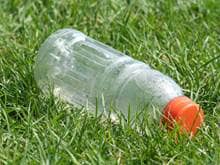 Remove any obstacle you find on the path or in the road. You may prevent someone from falling over it and prevent injury! A large stone on a pathway, or a broken stick and broken glass may be obvious to us, but someone with impaired sight may not see them.
Remove any obstacle you find on the path or in the road. You may prevent someone from falling over it and prevent injury! A large stone on a pathway, or a broken stick and broken glass may be obvious to us, but someone with impaired sight may not see them.-–nightgoneblack
Foster a Child

If you asked me six months into my foster parenting experience, I'd have said, "No! Run and hide! Find another way to be a good person." But ask me now, and I'll tell you it's one of the best things I've ever done in my life, to take in a very at-risk teenager. This is a story with a wonderfully happy ending.
Our formerly troubled foster daughter is now 19, a freshman in college (we paid the tuition and books)...Three weeks ago she was baptized in our church. She had asked my husband and me to be her godparents. What an honor to us! Every Sunday night we chat on the phone with her as well our other grown kids.
We were "friends in need" to these young people. It was very, very hard at times to be so -- but oh, yes, it is definitely something I am so very, very glad we did. Our relationship with these young women will undoubtedly last forever.
--SweetBetsy
Act Locally
 Think globally, act locally. Local elections are very important, the candidates we elect will have a direct effect on our lives and the environment around us. Getting involved from the ground up we can really make history and establish good friendships with those we support. I can't stress enough how very valuable this could be or is to our causes.
Think globally, act locally. Local elections are very important, the candidates we elect will have a direct effect on our lives and the environment around us. Getting involved from the ground up we can really make history and establish good friendships with those we support. I can't stress enough how very valuable this could be or is to our causes.–Cleo
Write a Living Will
 I have a Living Will and in it it states that all my body can be donated. Once my ashes are scattered in the wind, they won't be able to help anyone, so I hope someone can use me!
I have a Living Will and in it it states that all my body can be donated. Once my ashes are scattered in the wind, they won't be able to help anyone, so I hope someone can use me!--Suzy
Respect the Earth
 As time goes on, my respect and love for the planet has grown a thousand-fold. Rather than feeling like a victim of policies and politicians, I choose to remain an active positive force in helping to heal our Mother Earth by getting involved and sharing how we can all make a difference if we only try.
As time goes on, my respect and love for the planet has grown a thousand-fold. Rather than feeling like a victim of policies and politicians, I choose to remain an active positive force in helping to heal our Mother Earth by getting involved and sharing how we can all make a difference if we only try.I find that being an environmentalist has been a tough, responsible job! I can no longer be unconscious about my "habits" anymore. I can't help but feel that my actions affect the whole. Over time what started out as a gradual way of doing things have ended up as lifestyle changes (some major!). Even so, there's no turning back and pretending not to notice.
--dharmagirl
Find Your Cause
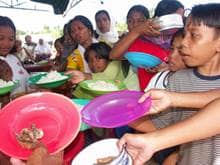 My life is pretty much about volunteering, though I do work for a nonprofit as well, raising money for education. I do quite a bit through my church, and crochet and sew for at least a dozen charities. I also participate in fundraising for a few other organizations. It never feels like I can do enough, with all the needs that are out there! Barbara
My life is pretty much about volunteering, though I do work for a nonprofit as well, raising money for education. I do quite a bit through my church, and crochet and sew for at least a dozen charities. I also participate in fundraising for a few other organizations. It never feels like I can do enough, with all the needs that are out there! Barbara–QuietQuakerLady
Make Friends Around the World
 Peace and love are both connected. I have a friend in another country, and she is really a blessing to me. I feel like we are close friends. So maybe we need to love all nationalities, countries. I have another friend who has done missionary work overseas and loves it so much she has decided to go back again.
Peace and love are both connected. I have a friend in another country, and she is really a blessing to me. I feel like we are close friends. So maybe we need to love all nationalities, countries. I have another friend who has done missionary work overseas and loves it so much she has decided to go back again.--jessie09






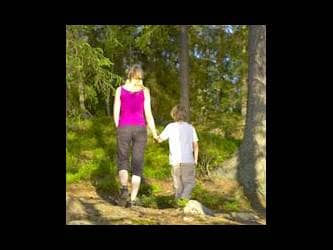

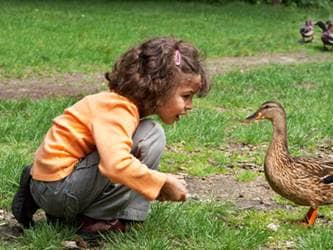



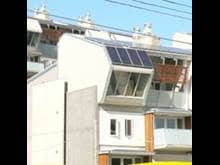
 ...but you might be wasting it. You can perform your own
...but you might be wasting it. You can perform your own  Swap your old light bulbs for
Swap your old light bulbs for 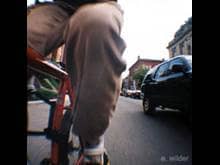 Carpool, bus, bike, or walk more often. If you have to drive, choose a fuel-efficient vehicle, and
Carpool, bus, bike, or walk more often. If you have to drive, choose a fuel-efficient vehicle, and 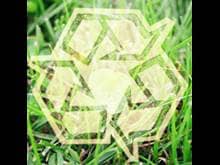 Reduce,
Reduce, 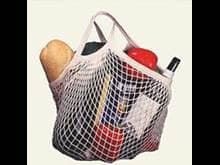 Use
Use  Eat local and/or organic whenever you can--local products don't have to be shipped all over the world, and organics are better for the land. Farmers' markets, local grocers, and
Eat local and/or organic whenever you can--local products don't have to be shipped all over the world, and organics are better for the land. Farmers' markets, local grocers, and  Meat production consumes more resources--land, water, and oil--than production of vegetation for food, so
Meat production consumes more resources--land, water, and oil--than production of vegetation for food, so 
 Join, support, or otherwise help
Join, support, or otherwise help 

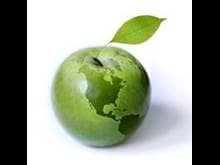
 As a family we recycle what we can. We separate out glass, plastic, cardboard, cans, and newspapers, taking it down to our recycling centre when we are passing it--no point in using the petrol to make a special journey there as that would defeat the object of the exercise! We also turn off the TV standby button, and switch off unnecessary lights, just our small bit to try to save our precious planet for our grandchildren!
As a family we recycle what we can. We separate out glass, plastic, cardboard, cans, and newspapers, taking it down to our recycling centre when we are passing it--no point in using the petrol to make a special journey there as that would defeat the object of the exercise! We also turn off the TV standby button, and switch off unnecessary lights, just our small bit to try to save our precious planet for our grandchildren! Unplug! There are many, many things around the house that are plugged in and draining little bits of energy round the clock, without even being "on"--i.e., your TV/VCR/Stereo/DVD player, computer, microwave, battery charger, anything else with a constant display (clock) or some sort of programming that resets when the power goes out. Unplug them until you are ready to use them and forego the convenience of the programming if possible, or use a power strip and turn it off, thus unplugging many things at the flick of a switch (great for the entertainment center).
Unplug! There are many, many things around the house that are plugged in and draining little bits of energy round the clock, without even being "on"--i.e., your TV/VCR/Stereo/DVD player, computer, microwave, battery charger, anything else with a constant display (clock) or some sort of programming that resets when the power goes out. Unplug them until you are ready to use them and forego the convenience of the programming if possible, or use a power strip and turn it off, thus unplugging many things at the flick of a switch (great for the entertainment center).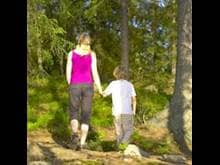 I've always had a love affair with nature, but now that I have a child, I am spending a lot of pondering time in it. In walks to the park I feel a sense of enchantment, awakened by my daughter's wonder. We explore flowers, trees, and rocks. After our outings, I feel peaceful, connected, and refreshed. She leaves with a smile on her face and a calm that silently bonds us. I am starting to understand the deep impact nature has, and the responsibility I carry with my choices. I have recently started using environmental diapers, recycling diligently, and buying natural products.
I've always had a love affair with nature, but now that I have a child, I am spending a lot of pondering time in it. In walks to the park I feel a sense of enchantment, awakened by my daughter's wonder. We explore flowers, trees, and rocks. After our outings, I feel peaceful, connected, and refreshed. She leaves with a smile on her face and a calm that silently bonds us. I am starting to understand the deep impact nature has, and the responsibility I carry with my choices. I have recently started using environmental diapers, recycling diligently, and buying natural products. I don't know how possible this is, but my idea is for the government to order all car manufacturers to make only hybrid cars from now on. No more cars that run on just gas. That way every person buying a new car will be buying a hybrid, and in a matter of just a few years, the percentage of hybrid cars to gas cars will be much higher.
I don't know how possible this is, but my idea is for the government to order all car manufacturers to make only hybrid cars from now on. No more cars that run on just gas. That way every person buying a new car will be buying a hybrid, and in a matter of just a few years, the percentage of hybrid cars to gas cars will be much higher. Lead by your life's example. If you are concerned with the effects of pollution, overconsumption, encroachment, extinction, etc., you must start by "walking lightly" on the earth. Be more aware of how your choices impact the world. Make transportation choices that consume less energy (e.g. walk, ride, public transit, carpool). Learn to distinguish what you need from what you desire, and then make intelligent choices based upon how much utility you gain. Take some of the money you save from the above exercise and use it to support groups that are making a difference.
Lead by your life's example. If you are concerned with the effects of pollution, overconsumption, encroachment, extinction, etc., you must start by "walking lightly" on the earth. Be more aware of how your choices impact the world. Make transportation choices that consume less energy (e.g. walk, ride, public transit, carpool). Learn to distinguish what you need from what you desire, and then make intelligent choices based upon how much utility you gain. Take some of the money you save from the above exercise and use it to support groups that are making a difference. I have five composters. The resulting compost feeds my many gardens and my decreasing patches of sod. I grow fruits and vegetables and freeze and can as much as I'm able....I don't use air-conditioning in the summer, use natural gas for heat, cooking and clothes drying in the winter (in the summer we air-dry mainly); recycle my gray water for plant watering in the summer, collect rainwater in a barrel.
I have five composters. The resulting compost feeds my many gardens and my decreasing patches of sod. I grow fruits and vegetables and freeze and can as much as I'm able....I don't use air-conditioning in the summer, use natural gas for heat, cooking and clothes drying in the winter (in the summer we air-dry mainly); recycle my gray water for plant watering in the summer, collect rainwater in a barrel.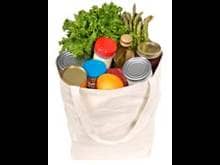 In our country here Down Under, there has been a movement to introduce reusable shopping bags instead of giving people the usual plastic bags for groceries. The reusable bag, which is made of some lightweight sort of fibre, costs $1.00, and you can put a lot of groceries in them. They have become very, very popular here, and it is like a badge of honour to carry one. In fact, although you can still get a plastic bag for your groceries if you want, the checkers in our supermarkets in our mall always ask customers if they wouldn't rather buy a resuable.
In our country here Down Under, there has been a movement to introduce reusable shopping bags instead of giving people the usual plastic bags for groceries. The reusable bag, which is made of some lightweight sort of fibre, costs $1.00, and you can put a lot of groceries in them. They have become very, very popular here, and it is like a badge of honour to carry one. In fact, although you can still get a plastic bag for your groceries if you want, the checkers in our supermarkets in our mall always ask customers if they wouldn't rather buy a resuable. As much as possible I commute on my motorbike; 65 MPG. Speeds, even on the highway, are kept down. The car & motorbike live by the WWII adage: "Is this trip really necessary?" As much as possible I take the bicycle instead. For recreation I bicycle, sail or paddle instead of motor.
As much as possible I commute on my motorbike; 65 MPG. Speeds, even on the highway, are kept down. The car & motorbike live by the WWII adage: "Is this trip really necessary?" As much as possible I take the bicycle instead. For recreation I bicycle, sail or paddle instead of motor. I try to clean with "green" products. I noticed that many regular household cleansers were actually bringing irritants into my home. I could hardly breathe and my eyes would burn. And then once released down the drain or thrown in the trash, I realized they would wreak their own special havoc on eco-systems. So now I try to use products made by companies like Seventh Generation--or I just wash windows with vinegar and newspaper, scrub the tub with baking soda and water.
I try to clean with "green" products. I noticed that many regular household cleansers were actually bringing irritants into my home. I could hardly breathe and my eyes would burn. And then once released down the drain or thrown in the trash, I realized they would wreak their own special havoc on eco-systems. So now I try to use products made by companies like Seventh Generation--or I just wash windows with vinegar and newspaper, scrub the tub with baking soda and water. I'm not a vegetarian (yet)...but I'm cutting back on my meat consumption and eating more organic produce. Most of the deforestation in the world is caused by fields cleared for livestock grazing. Cows' methane is a huge contributor to global warming, and the amount of resources it takes to feed one cow could grow many times more grains and vegetables. So it's not just the ethics of eating meat, but even cutting down our consumption can make a huge impact.
I'm not a vegetarian (yet)...but I'm cutting back on my meat consumption and eating more organic produce. Most of the deforestation in the world is caused by fields cleared for livestock grazing. Cows' methane is a huge contributor to global warming, and the amount of resources it takes to feed one cow could grow many times more grains and vegetables. So it's not just the ethics of eating meat, but even cutting down our consumption can make a huge impact.
